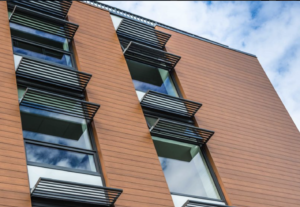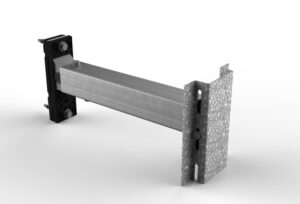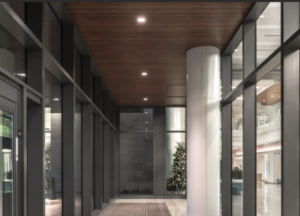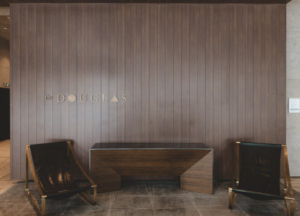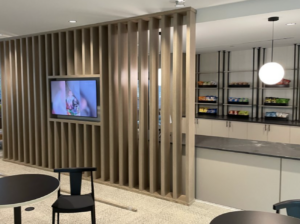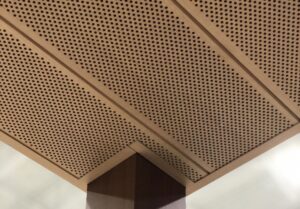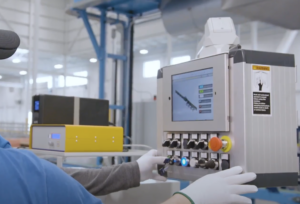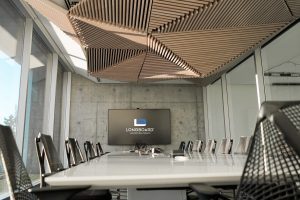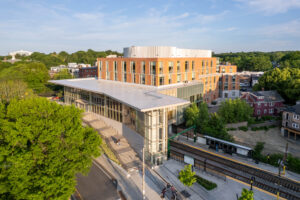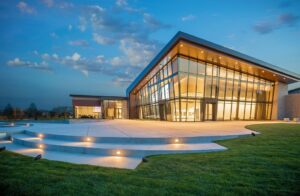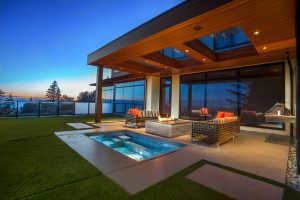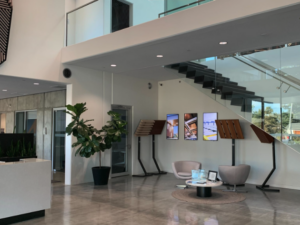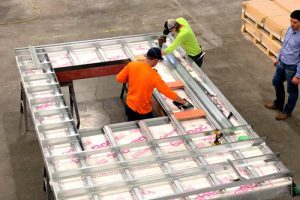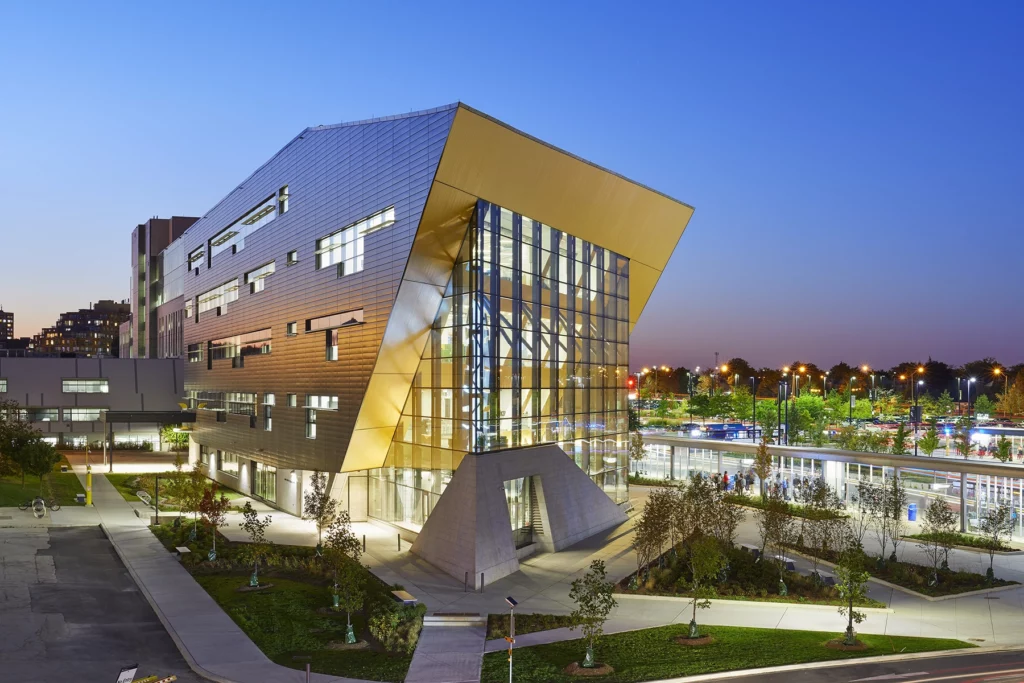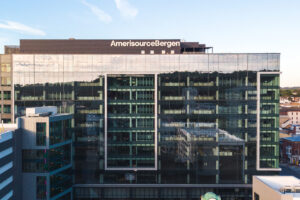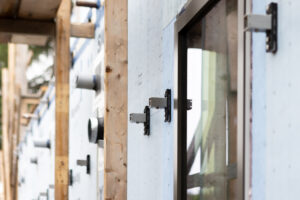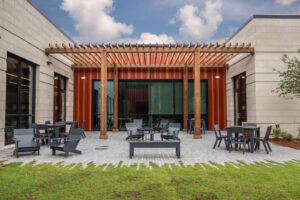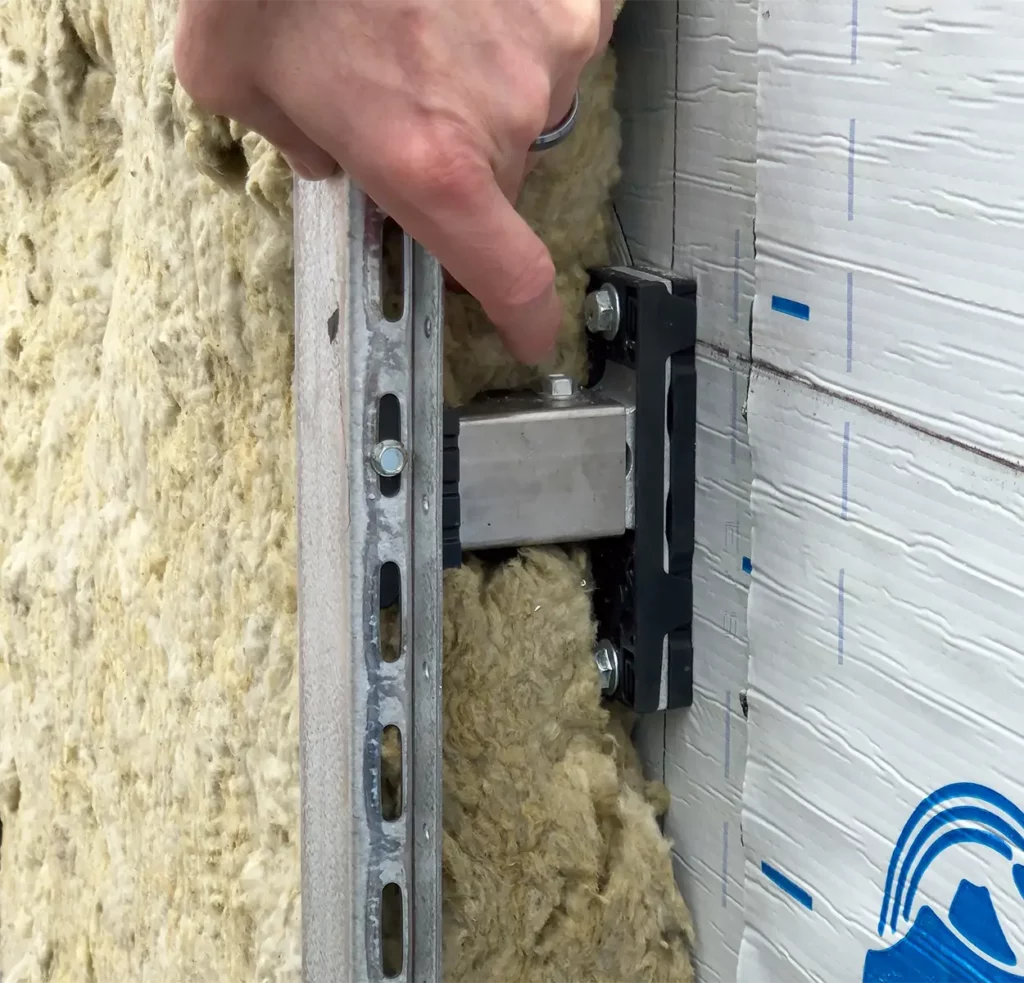Content Type:
Trends
Project Type:
Civic/Gvt, Education, Hotel/Hospitality, Retail
System Name:
T&G Planks
Installation:
Interior, Exterior
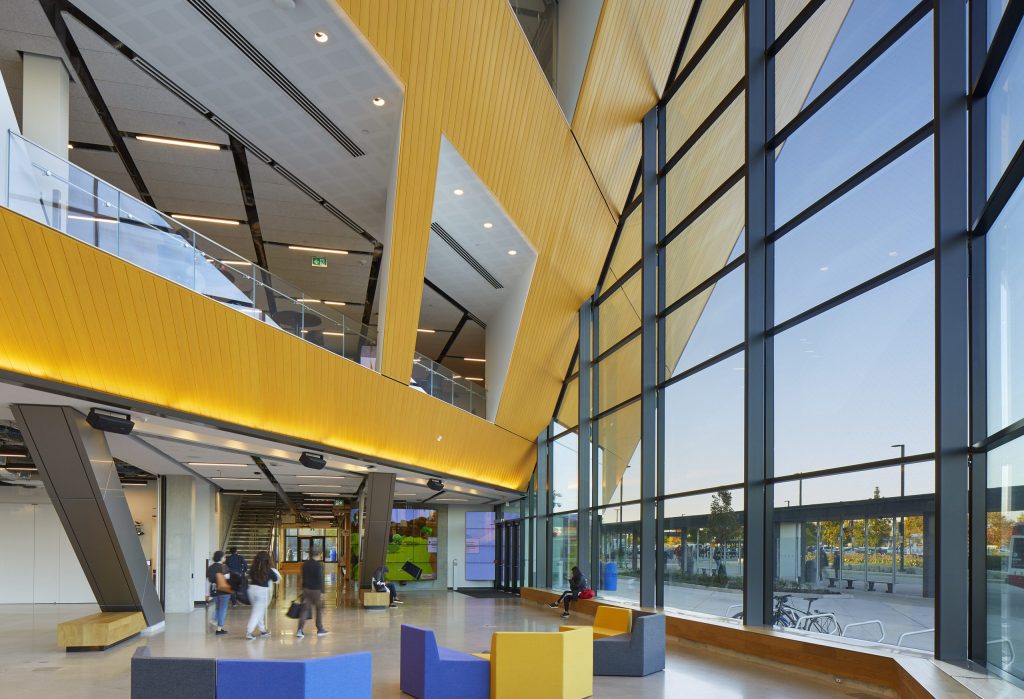
Blending the aesthetics of interior and exterior design is a crucial aspect of architectural practice. It not only enhances the overall appeal of a building but also improves functionality and user experience by creating a seamless transition between spaces. Understanding how to achieve this harmony requires a thoughtful approach to design elements, material selection, and environmental considerations.
Key Principles for Blending Interior and Exterior Aesthetics
Continuity in Design
Creating a cohesive look between the interior and exterior of a building starts with continuity in design. This involves the consistent use of materials and finishes, a unified color palette, and the repetition of design motifs.
Material Consistency
- Exterior Cladding and Interior Finishes: Using the same materials for exterior cladding and interior finishes can create a seamless transition between inside and outside. This approach helps to visually link different parts of a building and reinforces a unified design language. For instance, a stone wall that extends from the building’s facade into the interior lobby creates a strong connection between the exterior and interior spaces.
- Flooring Materials: Extending exterior flooring materials into interior spaces can also enhance continuity. For example, a patio or terrace might feature the same stone or tile as an adjacent indoor area, making the transition smooth and unobtrusive.
- Structural Elements: Exposed structural elements such as beams, columns, and supports that are consistent both inside and outside can create a cohesive aesthetic. This approach can be particularly effective in industrial and commercial buildings where structural honesty is a valued design principle.
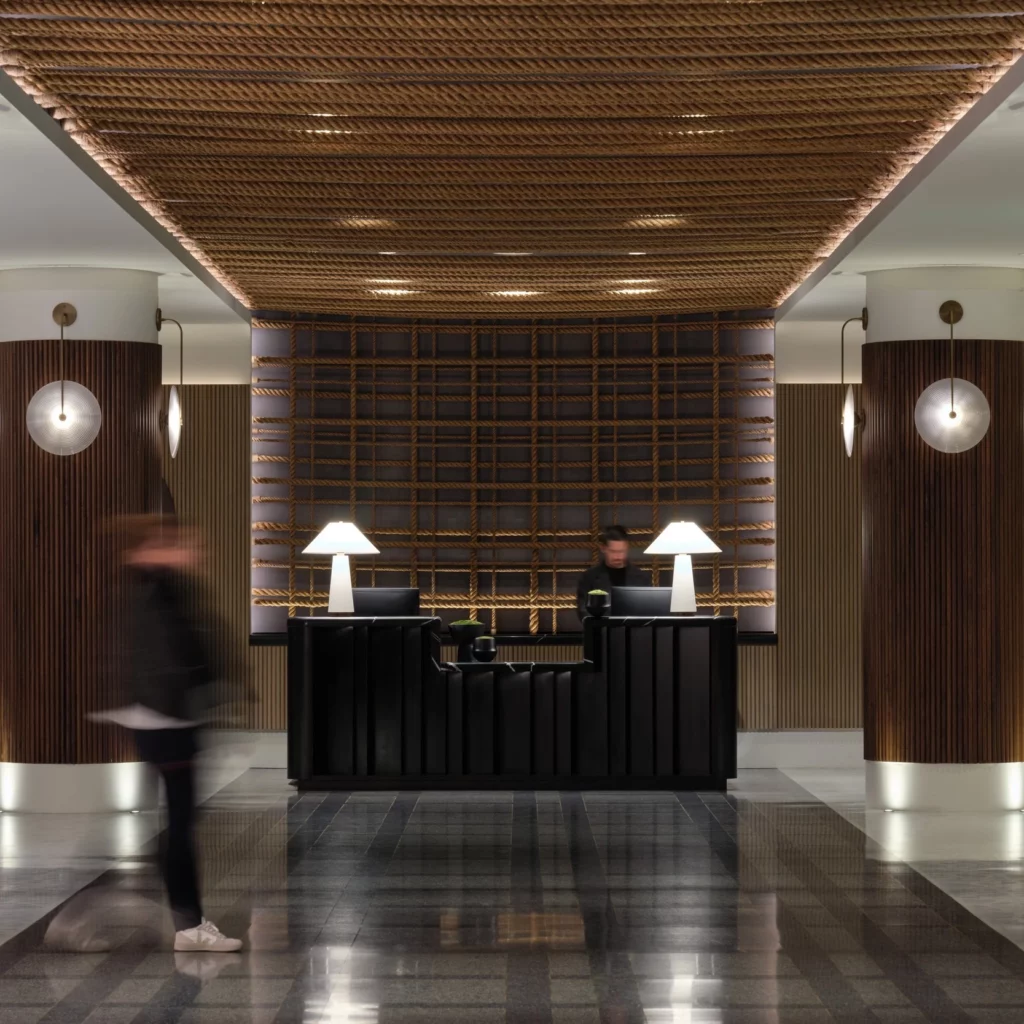
Color Palette
- Unified Color Schemes: A unified color palette helps create a harmonious look throughout a building. By selecting colors that complement each other and using them consistently, designers can ensure that both the interior and exterior feel like parts of a cohesive whole. Neutral colors, natural tones, and earth shades often work well to bridge indoor and outdoor spaces.
- Accent Colors: Strategic use of accent colors can enhance specific features or areas while maintaining overall harmony. These accents can highlight architectural details, guide users through the space, or create focal points that draw attention.
- Environmental Integration: Colors that reflect the surrounding environment can help a building blend seamlessly with its context. For example, using greens and browns in a building located in a forested area, or blues and grays for a building near the coast, can reinforce the connection between the building and its natural surroundings.
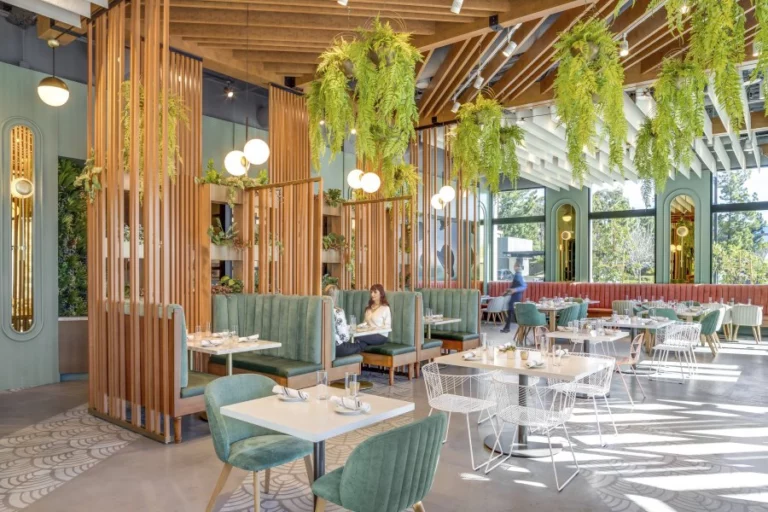
Design Motifs
- Repetition of Patterns: Repeating design motifs, such as patterns and shapes, can create visual continuity between interior and exterior spaces. This can be achieved through architectural features, furniture, and decor elements.
- Thematic Consistency: A consistent thematic approach can unify the design. For instance, a building with an industrial aesthetic might use metal and exposed concrete both inside and out, while a more naturalistic design might incorporate wood and organic shapes throughout.
- Functional Elements: Design motifs can also be expressed through functional elements like furniture, lighting, and signage. Using similar styles and materials for these items inside and outside can enhance the sense of a unified space.
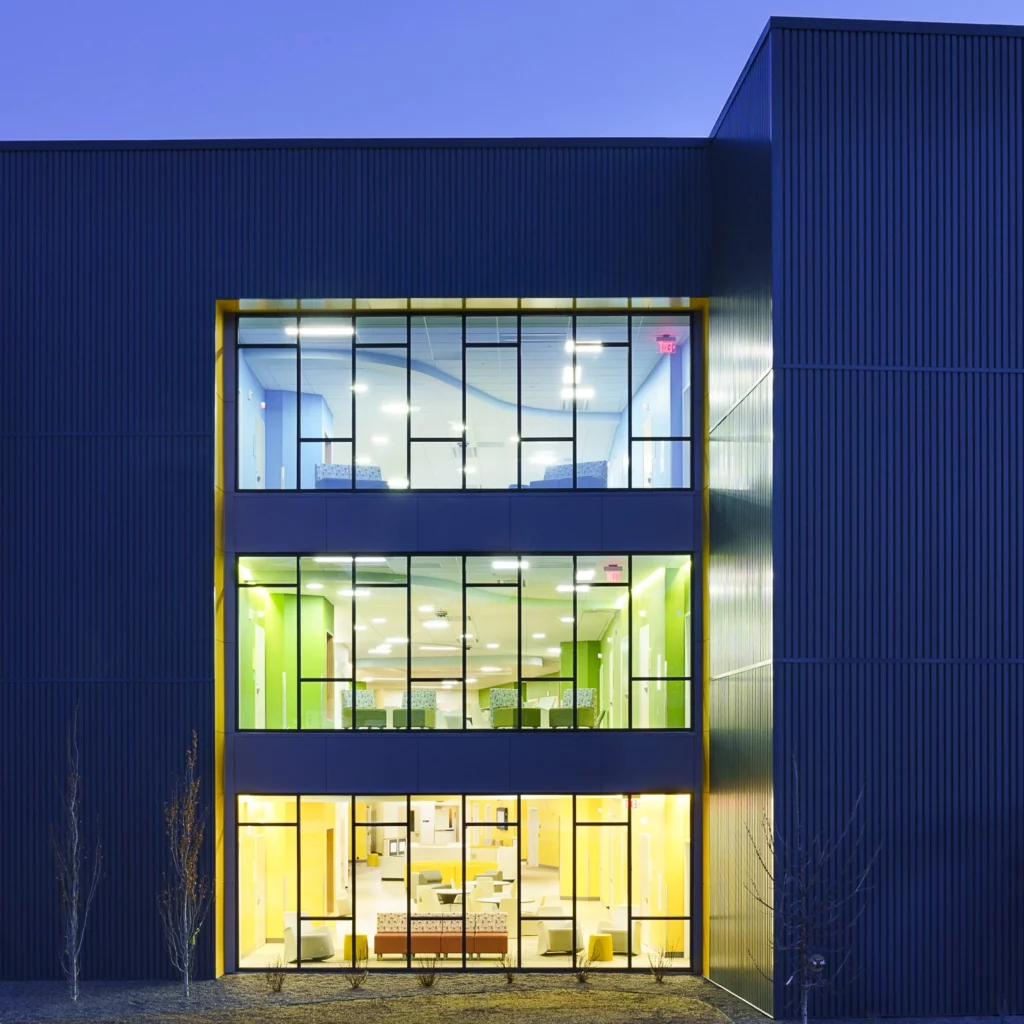
Integration of Natural Elements
Incorporating natural elements into both the interior and exterior design can significantly enhance the sense of connection between the two. Key strategies include:
- Maximizing Natural Light: Large windows, skylights, and glass doors allow natural light to penetrate deep into the interior spaces, reducing the need for artificial lighting and creating a connection with the outdoors. Natural light not only enhances the aesthetic appeal but also improves the well-being and productivity of occupants by providing a healthier indoor environment.
- Indoor-Outdoor Spaces: Designing spaces that open up to the outdoors, such as terraces, patios, and courtyards, can blur the boundaries between interior and exterior. These spaces can serve multiple functions, acting as extensions of indoor living or working areas and providing versatile environments for a variety of activities.
- Landscaping and Green Elements: Integrating indoor plants and green walls that mirror the outdoor landscaping helps in creating a cohesive natural environment. Landscaping elements such as trees, shrubs, and water features can be designed to flow seamlessly from outdoor spaces into interior areas, enhancing the overall aesthetic and ecological integration.
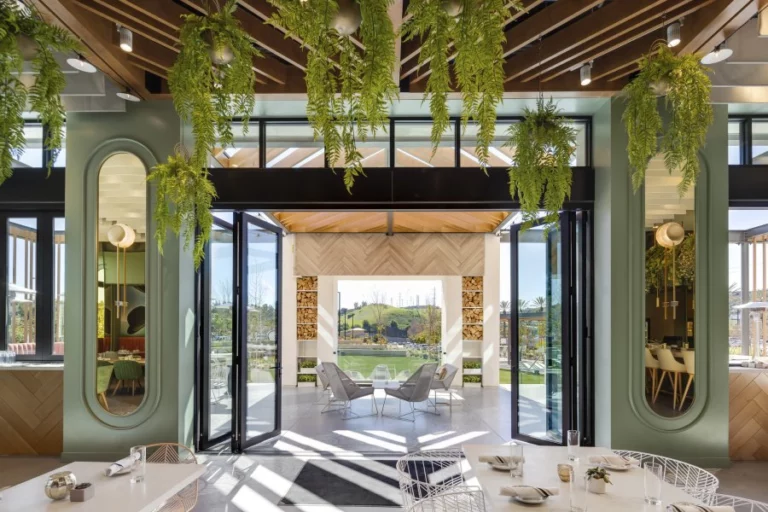
Functional Connectivity
Functional connectivity involves designing spaces that facilitate easy movement and interaction between indoor and outdoor areas. Here are some ways to achieve this:
- Fluid Spatial Layouts: Open floor plans and flexible spaces that can adapt to different functions promote seamless movement between indoor and outdoor areas. These layouts allow for dynamic usage of space, accommodating various activities and enhancing the versatility of the building.
- Multi-purpose Areas: Designing multi-purpose areas such as patios that serve as both indoor lounges and outdoor entertainment zones can enhance the functionality of a space. These areas can be easily transformed to suit different needs, providing a valuable extension of the indoor environment.
- Accessibility and Ease of Movement: Ensuring that there are clear and accessible pathways between indoor and outdoor areas enhances the overall functionality of the building. Features such as wide doorways, ramps, and level flooring can facilitate easy access, making it convenient for occupants to move between spaces.
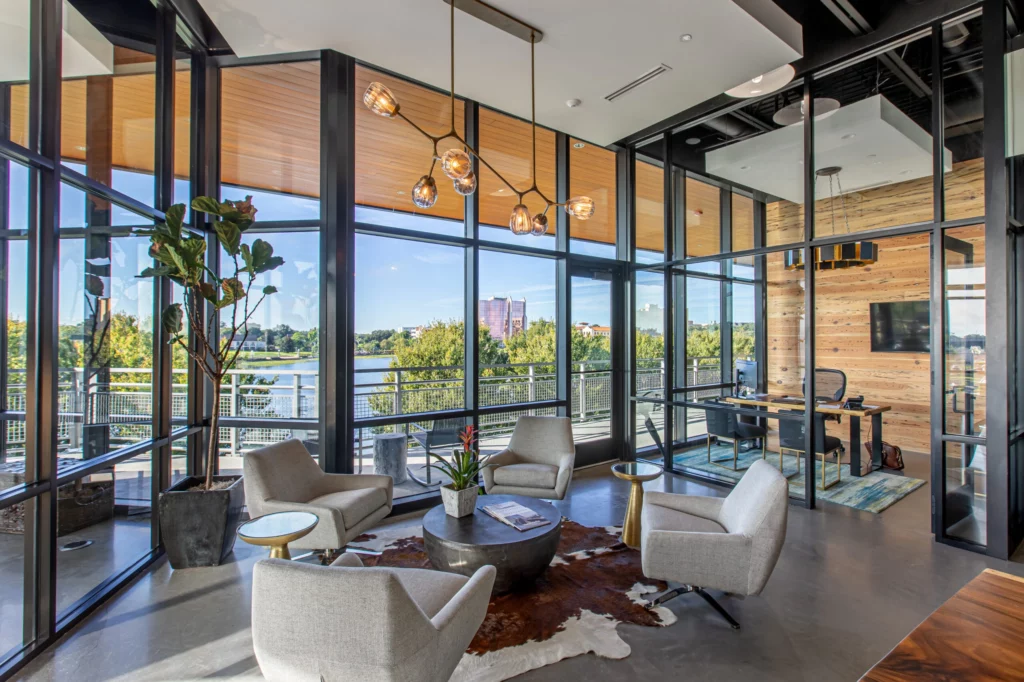
Techniques and Strategies
Material Selection
Choosing materials that work well both inside and out is fundamental. Here are some strategies for material selection:
- High-performance Glass: Glass is a versatile material that can be used to create transparent facades, bringing in natural light and connecting interior spaces with outdoor views.
- Natural Materials: Materials like wood, stone, and metal can provide a unified look when used both inside and out. These materials often age well and add a timeless quality to the design.
- Durable Materials: For industrial applications, durable materials like concrete and metal can be used both inside and out to maintain a consistent aesthetic and withstand heavy use.
Architectural Features
Incorporating specific architectural features can facilitate a seamless connection between interior and exterior spaces:
- Large Windows and Sliding Doors: Large windows and sliding doors can create a visual and physical connection between indoor and outdoor spaces, enhancing natural light and ventilation.
- Covered Outdoor Spaces: Verandas, terraces, and covered walkways provide transitional spaces that blur the boundaries between indoor and outdoor areas.
- Biophilic Design Elements: Incorporating biophilic design elements, such as living walls and indoor gardens, can create a healthier and more engaging environment.
Interior Design Elements
Continuity in flooring and ceiling treatments, as well as the inclusion of indoor greenery that mirrors outdoor landscaping, are key interior design elements:
- Flooring and Ceiling Treatments: Using the same flooring and ceiling materials inside and out can create a seamless transition. Polished concrete floors that extend from outdoor plazas into lobby areas are an example.
- Indoor Greenery: Incorporating indoor plants and green walls that reflect the outdoor landscaping helps in creating a cohesive natural environment.
- Consistent Material Use: Using the same materials for interior and exterior finishes can create a unified look. For example, using the same type of wood for exterior cladding and interior paneling.
Case Studies and Inspiration Projects
Parkwood Amenity Center by CSO
The Parkwood Amenity Center, designed by CSO Architects, is a community hub located within the Parkwood residential development. This center is designed to serve as a focal point for community activities and social interaction, providing a variety of recreational and social amenities in a setting that seamlessly blends indoor and outdoor spaces.
Key Design Elements
- The amenity center includes multi-purpose rooms that can be adapted for different activities and events.
- Large windows and glass doors provide visual and physical access to the outdoor amenities.
- The outdoor spaces are thoughtfully landscaped with walking paths, gardens, and seating areas that encourage residents to enjoy the natural surroundings.

The Amazon Spheres by NBBJ
The Amazon Spheres in Seattle, designed by NBBJ, are a striking example of integrating natural elements into a commercial environment. These glass domes house thousands of plants and provide a unique workspace for Amazon employees.
Key Design Elements
- Biophilic design with extensive greenery and natural light
- Open, flexible interior spaces that connect with outdoor areas
- Sustainable features such as energy-efficient glass and ventilation systems

Chhatrapati Shivaji International Airport’s Termilan 2 by SOM
The Chhatrapati Shivaji International Airport Terminal 2 in Mumbai, designed by Skidmore, Owings & Merrill (SOM), is a large-scale example of integrating interior and exterior design. The terminal is known for its expansive use of natural light and its integration with the surrounding landscape.
Key Design Elements
- Use of high-performance glass for extensive natural lighting
- Integration of indoor gardens and green spaces
- Open, flexible interior spaces that facilitate smooth passenger flow
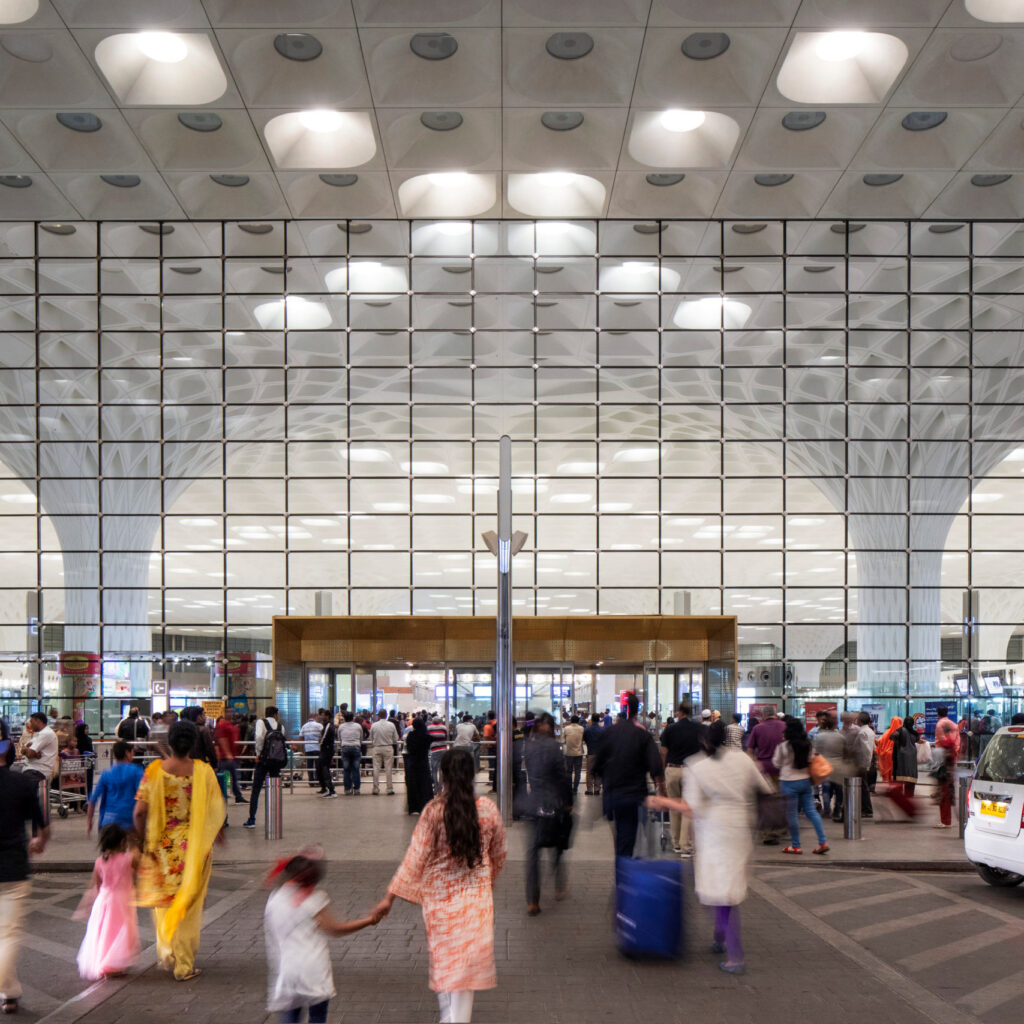
Barrett Centre for Technology Innovation by Perkins & Will
The Barrett Centre for Technology Innovation at Humber College is a state-of-the-art facility designed to foster innovation and collaboration. Perkins & Will designed it with an emphasis on sustainability and connection to the environment.
Key Design Elements
- Extensive use of glass and natural materials
- Open, flexible interior spaces that connect with outdoor areas
- Consistent design cues that flow from exterior to interior.
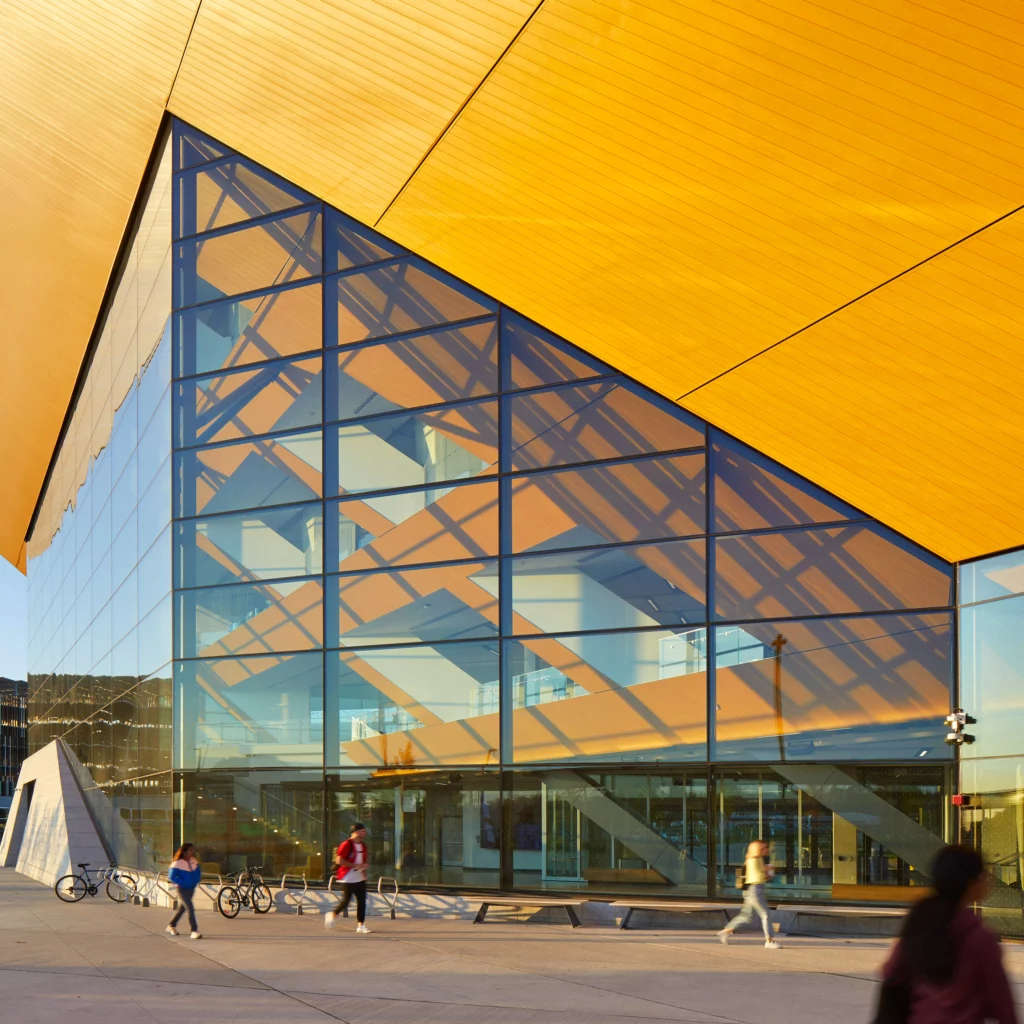
Practical Tips for Architects and Designers
Early Planning and Coordination
Early planning and coordination between architects and interior designers are essential. This collaboration ensures that both interior and exterior elements are considered from the beginning, leading to a more cohesive design.
For instance, during the planning stages of a commercial building, it’s crucial to consider how lobby materials will transition to the facade. In institutional projects, early coordination can ensure that campus buildings have a unified look and feel. Industrial projects benefit from planning exterior logistics areas in conjunction with interior workspaces to improve workflow and safety.
Custom Solutions
Tailoring design to the specific site and client needs is crucial. This might involve innovative use of technology and materials to create unique solutions that blend interior and exterior spaces seamlessly.
Commercial buildings might use custom glazing solutions to enhance views and energy efficiency. Institutional facilities, like schools, can use modular furniture and movable walls to create flexible learning environments that extend outdoors. Industrial projects can benefit from bespoke structural solutions that enhance both aesthetics and functionality.
Sustainability Considerations
Using eco-friendly materials and designing for energy efficiency not only benefits the environment but also enhances the overall design. Sustainable practices such as incorporating green roofs and energy-efficient systems can add to the aesthetic and functional value of a building.
For commercial spaces, using recycled materials and energy-efficient HVAC systems can reduce the carbon footprint. Institutional buildings might incorporate solar panels and rainwater harvesting systems. Industrial buildings can benefit from energy-efficient lighting and ventilation systems that improve working conditions and reduce operating costs.
Conclusion
Blending interior and exterior aesthetics is an important aspect of architectural design. By understanding and applying key principles such as continuity in design, integration of natural elements, and functional connectivity, architects and designers can create spaces that are both beautiful and functional.
Projects like Apple Park, The Amazon Spheres, The Bund Finance Center, and the Barrett Centre for Technology Innovation serve as inspiring examples of how to achieve this harmony. With careful planning, custom solutions, and a focus on sustainability, the possibilities for blending interior and exterior aesthetics are endless.
Looking for examples of how Longboard’s products have been used to achieve aesthetic consistency? Check out our blog below to explore five inspiring examples.

